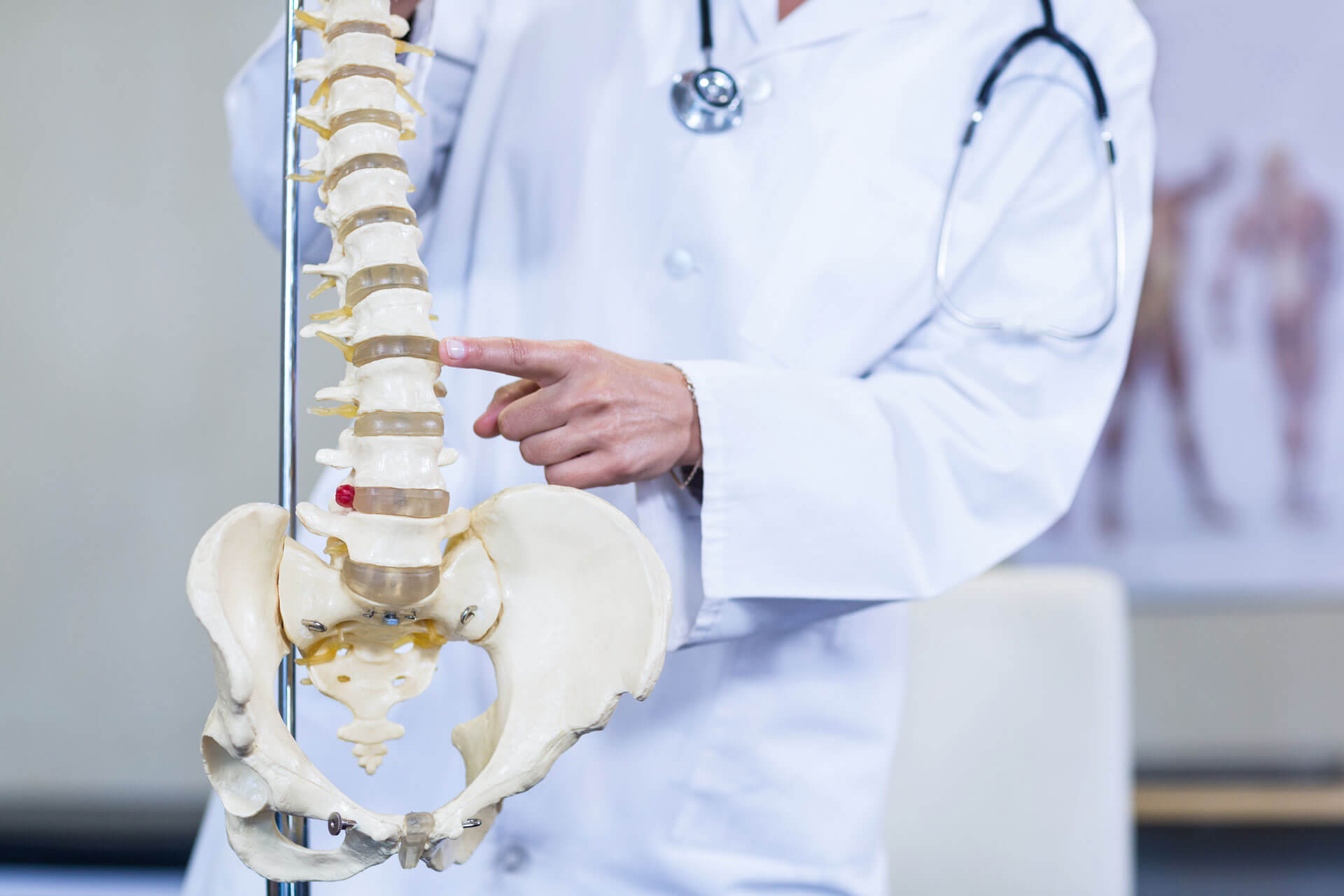Your spine is made up of many bones, which are called vertebrae. You’re born with about 33 vertebrae, but some fuse together as you grow older. Most adults have 24 vertebrae. Each vertebra is stacked on top of the other, and discs between them stop the bones from rubbing against each other when you move. If the disc becomes worn or slips out of place, this may lead to constant back pain and considerable discomfort.
Artificial disc replacement is a newer type of back surgery to treat painful discs in the lower back. Also called the lumbar region, the lower part of your spine is prone to disc problems from bending, twisting, turning, sitting or standing in the same position for long periods of time and from age-related wear and tear. This surgery provides relief from the pain and restores your full range of motion.
During the surgery, a metal or plastic prosthetic disc is implanted in your lower back. The implanted disc replaces your degenerated, arthritic or otherwise painful or damaged disc in your lower back. Artificial disc replacement is FDA-approved for use in the lower back.
Who is a Candidate for Artificial Disc Replacement?
When your low back pain doesn’t respond to over-the-counter pain relievers, rest, ice, wraps and other non-surgical methods, surgery may be the next step to achieving pain relief. In order to find out if you’re a candidate for this surgery, you’ll have a consultation with your doctor to go over your medical history, symptom onset and duration, lifestyle and all of the methods you’ve already tried to get rid of your chronic back pain.
Imaging for Artificial Disc Replacement
The first part in determining if you’re a candidate for an artificial disc replacement surgery is one or more imaging studies. Your doctor may order X-rays, discography, CT (computed tomography) scan or an MRI (magnetic resonance imaging). A radiologist will evaluate the images, and your doctor will use that information to determine if your disc needs to be replaced.
History of Low Back Pain
Your physician will also review your history of lumbar low back pain as well as your medical history. If you’ve already tried taking ibuprofen, acetaminophen or other pain relievers or you’ve had injections that didn’t help, surgery might be the only solution for you to find relief. If physical therapy, wearing braces and modifying your activities and lifestyle resulted in no improvement to your lumbar low back pain, you could be a candidate for an artificial disc replacement.
Your Health Status
A good candidate for artificial disc surgery has one or more discs that are causing lumbar low back pain. Good candidates have no deformities of the spine, no facet joint disease and no osteoporosis. To be a good candidate, you should have no prior major surgery on your back.
What to Expect During an Artificial Disc Replacement?
Knowing how artificial disc replacement works could lower your stress and worries about the procedure. Here’s what you can expect during the artificial disc replacement procedure.
Pre-Incision
An artificial disc replacement surgery is performed under general anesthesia. You will receive antibiotics in an IV before your surgery. During the surgery, you will be positioned lying on your back. A breathing tube will be placed down your throat. This tube, also called an endotracheal tube, will be connected to a ventilator to help you breathe during the surgery.
Surgical Procedure for for Artificial Disc Replacement
To replace your worn disc with an implanted artificial disc, a 3- to 8-centimeter oblique or transverse incision on the left side of your belly button is made. The surgical team gently moves your abdominal muscles, blood vessels and peritoneal sac, which contains your intestines, out of the way. They use special surgical retractors to keep these tissues and organs moved aside during the procedure. Your doctor visualizes the front part of your discs and removes them using surgical tools for grasping bone and cartilage.
Distractor instruments maintain the space between the vertebrae and determine the right size of artificial disc or vertebral prosthesis you need. The surgical team then places the prepared artificial disc into the space held open by the distractor. A radiologist takes X-rays to confirm that the artificial disc is in proper alignment in your spine.
Once the disc is confirmed to be in the right place, your surgeon sutures the abdominal muscle, fascia and subcutaneous layers closed. Finally, your surgeon glues the incision shut. Glue is used because it leaves minimal scarring on your belly. The entire surgery lasts for one to two hours, depending on how many spinal discs you need to have replaced.
What to Expect After an Artificial Disc Replacement
After your artificial disc replacement, most patients spend from one to two days in the hospital. During your short hospital stay, you’ll be encouraged to do some light exercises, includin
- Gentle trunk twists
- Walking
- Stretching
After you go home, you’ll be encouraged to gradually increase how much time you spend walking and doing light activities each day. Light activity also reduces some of the unpleasant side effects of anesthesia, such as constipation and swelling in the feet and ankles. You will not be allowed to do heavy exercises or strenuous activities until cleared by your doctor. Most patients start to experience improvement in low back pain in the weeks following artificial disc replacement.
Thanks to artificial disc replacement, you don’t have to keep missing out on the special moments in life and living with low back pain. This procedure allows you to get back to living life to the fullest and spending time doing activities you love. Make an appointment today with Dr. Alexander so that you can live pain-free and eliminate low back pain for good.
